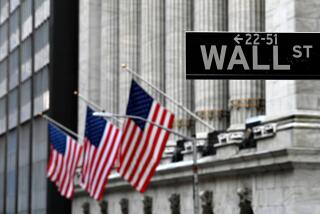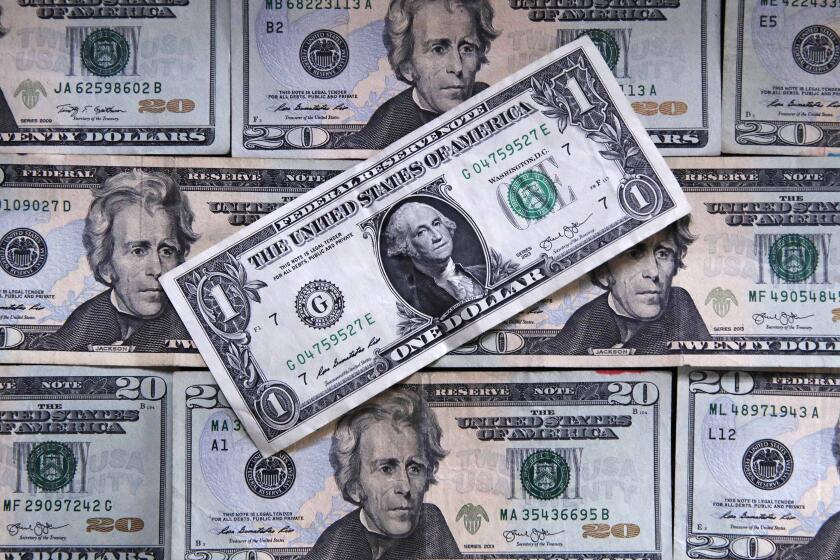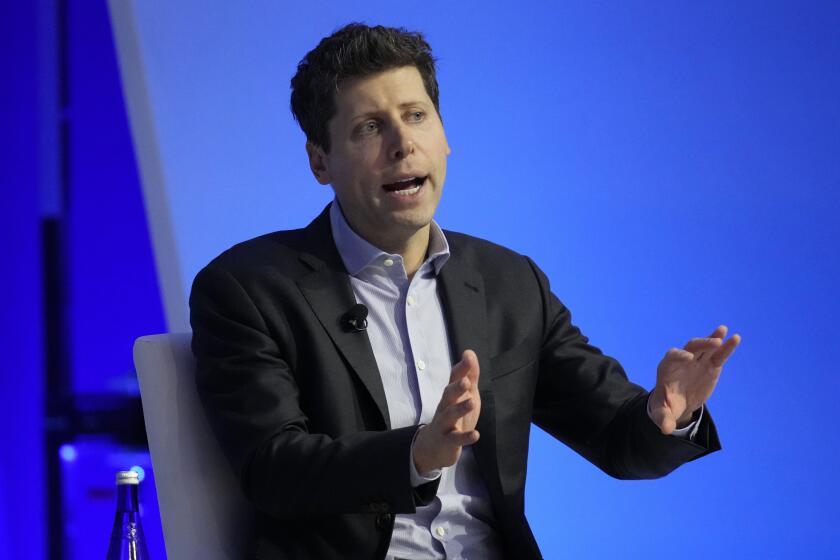Fees Take a Big Bite Out of Some Funds’ Returns
- Share via
If investors will ever be aware of the management fees they pay on their mutual funds, it ought to be now. Consider:
* High annual expenses drove some money market fund yields to nearly zero in 2001. Even money market funds with more moderate fees ended up with negative returns after inflation and taxes were considered.
* Although bond investments generally did well last year, mutual fund fees ate up one-quarter to one-third of the gross returns on many bond funds--a proportion one analyst called “obscene.”
* High management and administration costs added insult to the injury of losing stock fund investments. Many of the funds with the highest fees have been among the worst performers, according to Standard & Poor’s.
Yet investment experts say investors still pay too little attention to management costs when evaluating their funds’ performance. Annual fees taken directly and automatically by fund companies from portfolio assets include the costs of managing, administering and advertising the funds.
On top of those costs, some investors may pay upfront, deferred or back-end sales charges, or “loads,” depending on how they purchase the fund shares.
Some investors aren’t aware of the effect of annual fund expenses on their returns, while others don’t know that lower-cost alternatives are available, said Russ Kinnel, director of fund analysis for fund tracker Morningstar Inc.
“There’s absolutely no reason you have to pay those” higher fees, Kinnel said. “Some of the very best funds out there are low-cost.”
Investors’ lack of concern about fees has helped lead to higher costs in recent years, analysts said. The median expense ratio for all mutual funds is about 1.4% a year, or $140 for each $10,000 invested. That’s 10% higher than in 1995, according to fund tracker Lipper Inc.
“I wouldn’t say the industry has covered itself in glory” on the fee issue, Kinnel said. Three large mutual fund families--Vanguard Group, T. Rowe Price Group Inc. and Fidelity Investments--”are doing great jobs of passing along economies of scale” in the form of lower fees. “A lot of the others are not.”
Seemingly small differences in management fees can have huge effects on returns over time, Kinnel said.
Consider an investor who puts $10,000 into each of two mutual funds invested in a similar mix of stocks. One fund has a 1% annual expense ratio, but the other comes with a 2% annual cost.
If the stocks in both portfolios grow at an annualized 10% rate, the first investment would be worth $147,306 after 30 years. The second, with the higher fees, would be worth $109,357. One extra percentage point in costs over the years makes a difference of $37,949--more than three times the initial investment.
Some mutual fund managers contend that their higher expenses pay off in better results. But investors shouldn’t assume that a higher cost ratio guarantees higher returns, because the reality is often exactly the opposite, analysts said.
A study by Standard & Poor’s, for example, found that some of the highest-cost mutual funds badly trailed their peers in performance over the last three years. One of the worst performers of the group, Frontier Funds Equity Fund, had annual expenses of more than 15%. The fund lost nearly one-quarter of its value since 1998, while its peers were up 2.9%, S&P; said.
Frontier is tiny, with less than $200,000 in assets under management. Investors in such small funds often are saddled with high fees, because the costs of running the fund are generally fixed and can’t be spread over a larger amount of assets, S&P; said.
Investors in larger funds can face similar problems, however. Expense ratios can rise when a bear market or poor performance shrinks assets, while costs stay the same or rise. The problem can be exacerbated as some investors cash out, leaving the remaining shareholders to pay a larger proportion of the management costs.
How a fund is managed also can affect fees. A fund that employs researchers and star stock pickers typically will have a higher annual expense ratio than a passively managed index fund that mimics a market benchmark such as the S&P; 500. Likewise, international funds have higher average expenses than most domestic funds, because evaluating foreign investments is typically more difficult.
But investors needn’t pay more than 1% a year for a competent, broadly diversified domestic stock mutual fund or 1.3% for an international fund, Kinnel said.
And when it comes to bond funds, lower management fees are almost always better, he said. He recommends investing in government bond funds that take no more than 0.6% of assets annually in fees and corporate bond funds that keep annual expenses below 0.7%.
“You can end up giving away one-quarter to one-third of the yield of the portfolio [in fees], and that’s just obscene,” Kinnel said.
For example, investors in Ivy Bond B, a long-term corporate bond fund, lost about one-quarter of their return last year to expenses. The fund’s annual expense ratio was 2.45%, giving the fund an after-expenses total return of 7.6%, according to Morningstar.
By contrast, investors in HSBC Investor Fixed-Income, also a long-term corporate bond fund, gave up far less of their 2001 gross return to expenses. The fund’s expense ratio was 0.61% and its net total return was 8.39%, according to Morningstar.
Investors can find out how much their mutuals are costing them by looking up their funds’ expense ratios in the tables in this section or by visiting www.morningstar.com. In addition to listing the expense ratios of each fund, Morningstar offers a “portfolio X-ray” that shows the dollar amount the investor pays for annual expenses.
Knowing how much of a fund’s gross return is going to pay expenses is particularly important in the case of money market funds. The average money market fund expense ratio is now 0.47%, while the funds’ average yield is 1.59%. That means that fees, on average, are consuming nearly one-quarter of the funds’ gross yields, said Peter Crane, vice president and managing editor of Imoneynet.com, which tracks money markets.
Some investors did even worse. The net yield on Invesco Cash Reserves C, for example, tumbled to 0.01% last year after annual management and sales fees were deducted. The fund’s parent company stepped in to waive the fees temporarily, Crane said. The fund now yields about 0.68%.
Poor returns and high fees mean that more than 200 of the 1,600 money market funds Imoneynet.com tracks had yields of less than 1% at year end.
“Costs of one-half percentage point didn’t matter as much when yields were 5%, but when yields are 1.5%, it’s starting to look bad,” Crane said.
By contrast, the best-yielding taxable money markets return slightly above 2%.
Investors looking for lower-cost, higher-yielding money market funds can visit www.imoneynet.com.
More to Read
Inside the business of entertainment
The Wide Shot brings you news, analysis and insights on everything from streaming wars to production — and what it all means for the future.
You may occasionally receive promotional content from the Los Angeles Times.










